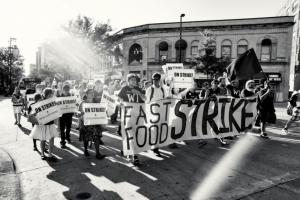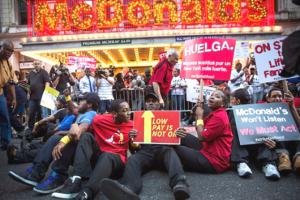In New York City, Fast-Food Workers May Soon Have a Permanent Voice
The American Prospect
 After Occupy in 2011, and the wave of fast-food strikes the following year in New York City, the movement to raise wages took a new turn and a bolder stance: $15 an hour and a union. When the campaign first began, that pay demand seemed like a pipe dream. Yet the call for $15 resonated. Now, the movement has scored victories in two of the biggest states in the country.
After Occupy in 2011, and the wave of fast-food strikes the following year in New York City, the movement to raise wages took a new turn and a bolder stance: $15 an hour and a union. When the campaign first began, that pay demand seemed like a pipe dream. Yet the call for $15 resonated. Now, the movement has scored victories in two of the biggest states in the country.
 The success of the organizing is due to everything from the abysmal recovery from the 2008 economic crisis to Occupy Wall Street's role in shifting the national dialogue from austerity to economic inequality. But Fight for 15 is due primarily to the Service Employees International Union (SEIU), which initiated the campaign in 2011 and has poured tens of millions of dollars into growing waves of protest that are battering the image of the fast-food giants.
The success of the organizing is due to everything from the abysmal recovery from the 2008 economic crisis to Occupy Wall Street's role in shifting the national dialogue from austerity to economic inequality. But Fight for 15 is due primarily to the Service Employees International Union (SEIU), which initiated the campaign in 2011 and has poured tens of millions of dollars into growing waves of protest that are battering the image of the fast-food giants.
Spread the word